Last year, prominent immigration propagandist and managing director of the Australian Housing and Research Institute, Michael Fotheringham, blamed the nation’s housing shortage on ‘greedy’ households consuming too many homes.
“We are consuming more houses for the number of people we have. That is a bigger driver for shortfall in housing than migration”.
“The number of people per household is decreasing. Australia is increasingly becoming a nation of single-person or two-person residences, with more than half of households consisting of just one or two people”.
“Of course, the more people we have feeds into the imbalance but it’s a lot more complex than that”.
“If the trend continues, Australia could be short on houses for the existing population, let alone for migrants”.
Fotheringham argued that Australians should open up empty rooms for people to rent. In other worlds, he wants more Australians to live in group homes.
New analysis from the e61 Institute shows that the number of people per household has decreased not because “we are consuming more houses for the number of people we have”, but because the number of children per household has shrunk alongside the collapse in the birth rate.
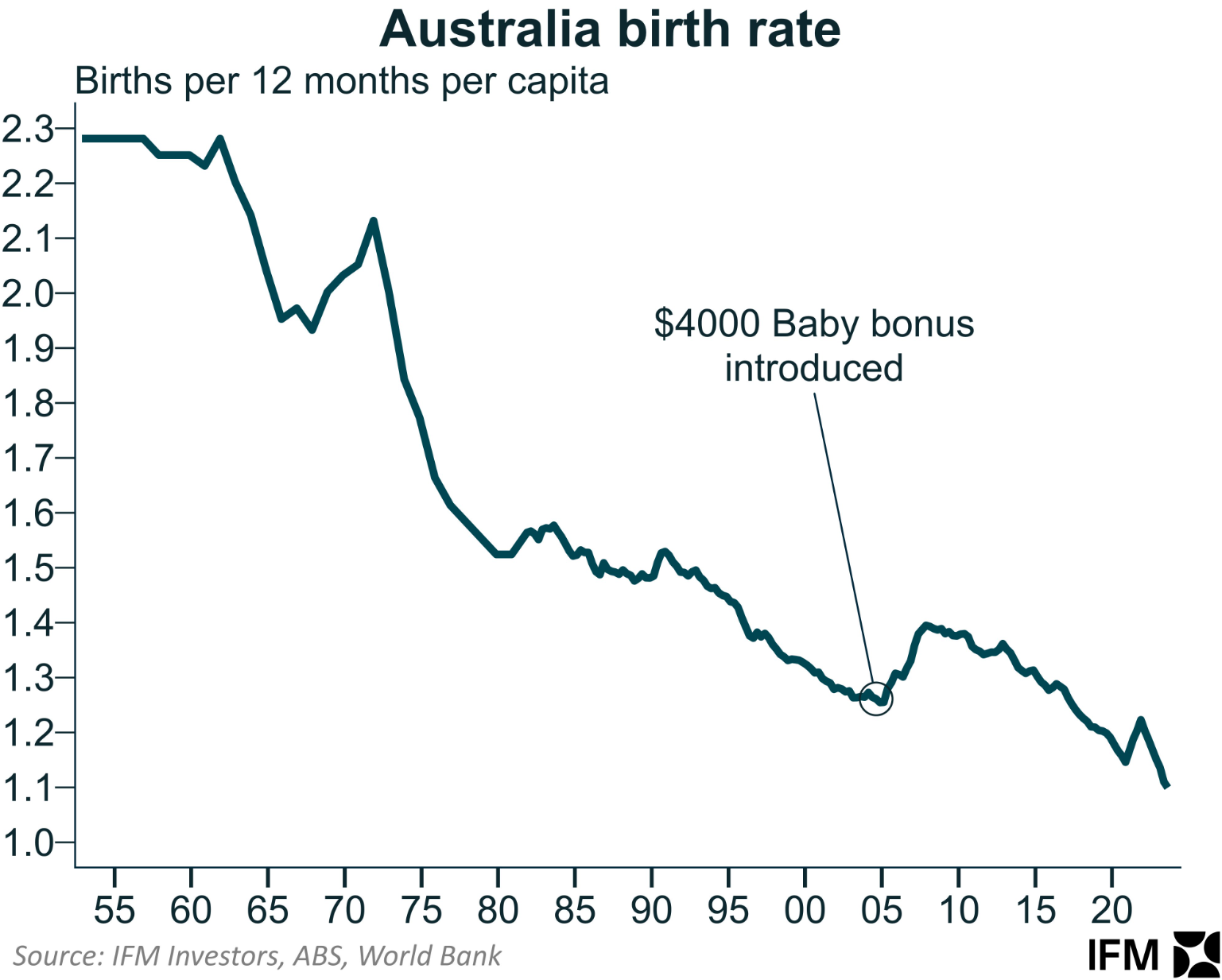
“Since the 1980s, Australia’s average household size has declined from over 2.8 in the 1980s to below 2.5 after the COVID-19 pandemic, with sharp decreases in the 1990s that eased in the 2000s”, Theo Gibbons from e61 notes.
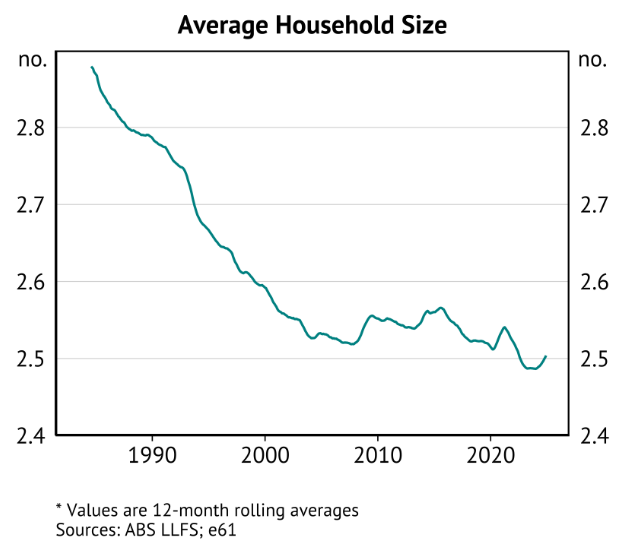
“The decline in average household size reflects more families living without children rather than more adults being able to afford to live with fewer people. In fact, the decrease in average household size has been primarily driven by a lower number of children per household”.
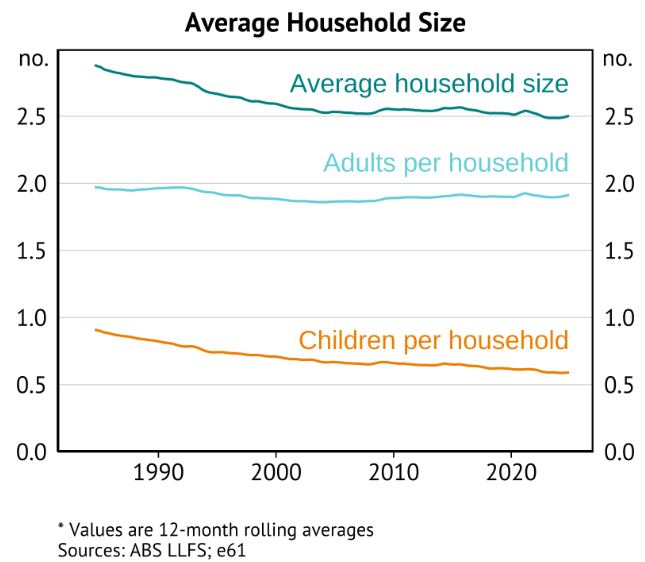
“The children-per-household metric has steadily fallen from 0.92 in the late 1980s to 0.59 in 2024. Adults per household has had relatively smaller shifts, declining from 1.96 in the late 1980s to all-time lows of 1.85 in 2003, before rising back to 1.92 by the end of 2024”, Gibbons writes.
The reality is that Australia’s high immigration is the primary driver of Australia’s housing shortage.
Australia’s population has ballooned by 8.7 million (46%) this century, the fastest growth rate in the advanced world.
In June 2024, AMP chief economist Shane Oliver estimated that Australia’s housing shortage exceeded 200,000, driven by immigration demand exceeding supply.
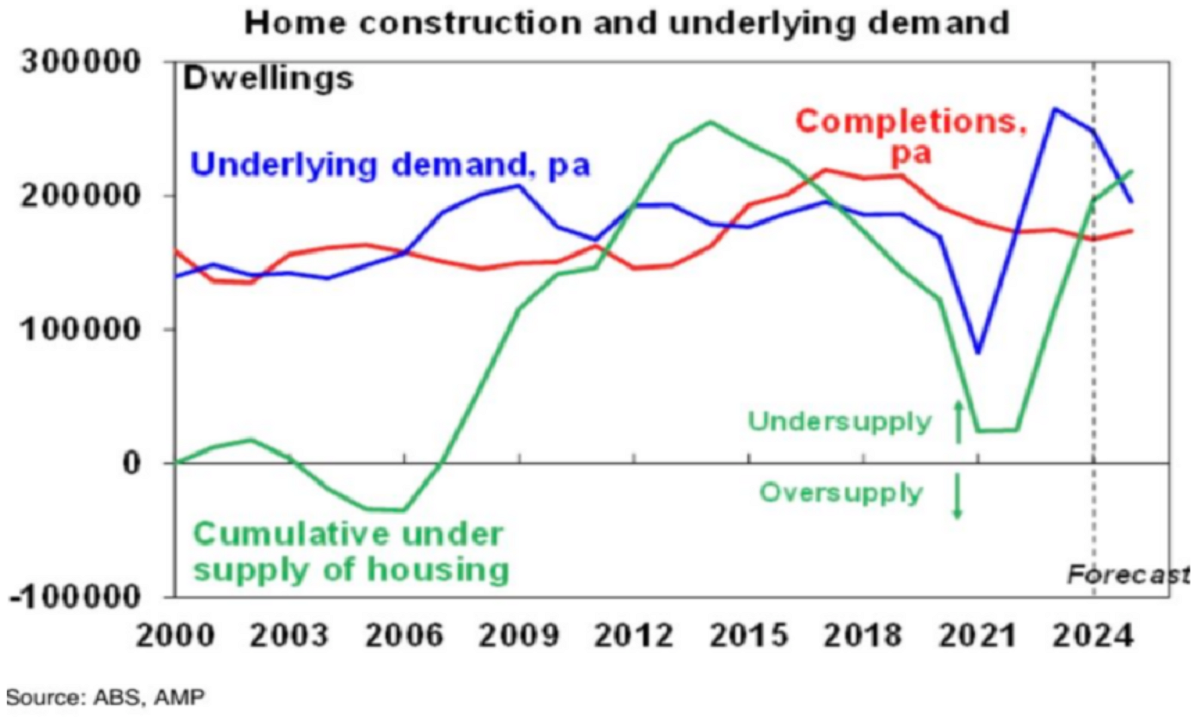
Last week’s report from the National Housing Supply & Affordability Council (NHSAC) forecasts that Australia’s housing shortage will worsen by 79,000 dwellings over the next five years as immigration demand continues to outpace new supply.
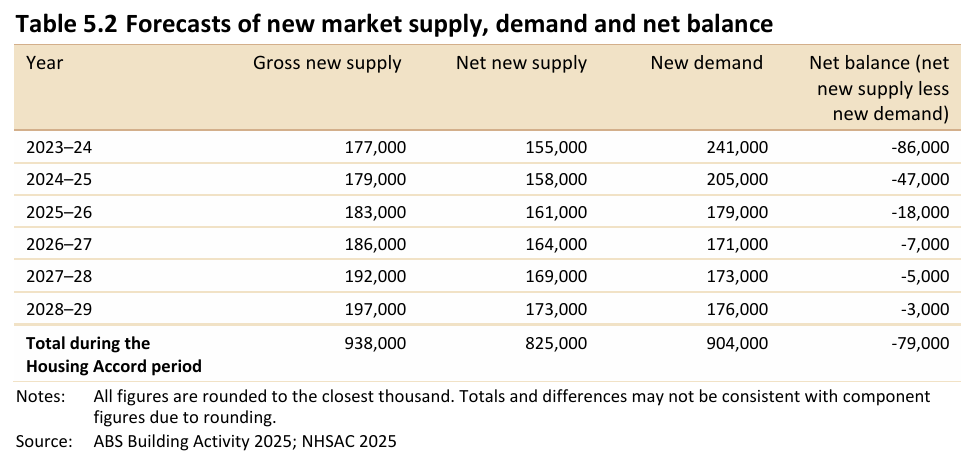
High immigration has also likely had a crowding-out effect on local birth rates.
Research published by HSBC showed that “a 10% increase in house prices leads to a 1.3% drop in birth rates, and an even sharper fall among renters”.
Record immigration is a key driver of Australia’s rising home values and rents, which has subsequently delayed plans to start a family.
Forcing Australians to live in group housing is a retrograde solution to the housing shortage that ultimately degrades living standards.
The real solution is to run a sensibly sized migration program that is compatible with the supply side of the housing market.

